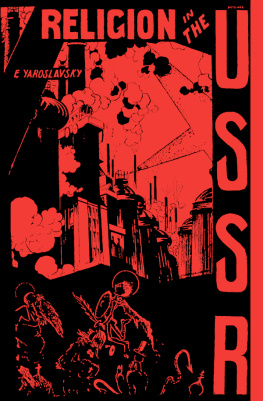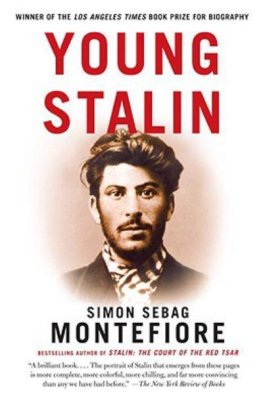Introduction
To give an account of the life and activities of Comrade Stalin, one must, of course, select what is most important and most essential. But when we begin to examine step by step the remarkable and splendid life of this great fighter for Communism, everything in it rivets our attention and arouses our profound interest. For, after all, we are dealing with the life and activities of a man who is a beloved comrade, a friend, a teacher and a father to all of us. Comrade Stalin is one of the founders of the great doctrine of revolution Marxism-Leninism. He is the genius who is carrying on the cause of Marx, Engels and Lenin, and the greatest theoretician of our times. Comrade Stalin was Lenin's closest colleague in the creation of the Bolshevik Party. Together with Lenin, he built it, consolidated it and reared it. Together with Lenin, Comrade Stalin built up the Communist International. Comrade Stalin is the great builder of the first Socialist state in the world. He is not only the leader of the peoples of the U.S.S.R.; the eyes of the working masses all over the world are more and more turning towards him as the leader of peoples. He was a master mind in three revolutions, and a tried and tested general in the battles for the consolidation of the Socialist state.
The name of Stalin is a symbol of the victories of Communism, a battle standard, the hope of the working people of the world.
It is no easy task to give even a brief account of the most important landmarks in his life and activities, for it means telling the story of the great struggle of the Party of Lenin and Stalin, the story of three revolutions, of the Civil War, of the building of the Socialist state, of Comrade Stalin's tremendous creative work in the realm of theory, and of his struggle against the numerous enemies of Bolshevism. It means recounting the whole history of the Party from its inception, for the life and activities of Comrade Stalin are most intimately interwoven with the life and activities of the Bolshevik Party.
Yet to recount all this is essential, all the more since a knowledge of the lives and activities of the great proletarian revolutionaries Marx, Engels, Lenin and Stalin helps us to learn and to work better, helps us to a better understanding of the distinguishing features of the work of these outstanding geniuses of the human race.
Chapter 1. Childhood and Youth. First Revolutionary Steps
Comrade Stalin was born on December 21, 1879, in a small house on the outskirts of the town of Gori, in the former Tiflis Province. "The room in which the family lived," D. Gogokhia, a schoolmate of Comrade Stalin's, tells us in his reminiscences, "was not more than about five square yards and adjoined the kitchen of the house. The door led straight into the courtyard; there was not even a doorstep. The floor was of brick. Light filtered in through a small window. The whole furniture of the room consisted of a small table, a stood, and a large sofa, something in the nature of a built-in bunk covered with a straw pallet."
The thousands of visitors who flock to Gori every year are profoundly moved at the sight of the humble home in which Comrade Stalin passed his childhood. His parents were poor folk. His father, Vissarion Djugashvili, was a shoemaker who for many years had been employed at the Adelkhanov factory, and at one time had worked at home as a cobbler. Visitors may still see Vissarion Djugashvili's "instruments of production" the old rickety chair, the hammer and lasts. Stalin's mother, Ekaterina, was a hard-working woman who had to slave day and night to enable her poor household to make ends meet. She was obliged to go out to work as a washerwoman. Comrade Stalin was acquainted with poverty and want from his earliest childhood. All around he saw the dire need of the workers and peasants, and sympathy for the exploited classes awakened early in his young breast.
In the numerous reminiscences of Comrade Stalin written by his childhood friends he is described as a lively and inquisitive boy, a favourite among his companions. At the age of seven he began to study the alphabet, and within a year was able to read, first in Georgian and then in Russian. From 1888 to 1894 he attended the ecclesiastical school in Gori. Like Lenin, he was a diligent scholar and always obtained the highest marks. He was first in study and play, a leader in all games, a good comrade and a favourite among his schoolfellows. He was fond of reading, drawing and singing.
While still a schoolboy, Comrade Stalin would often converse with workers and peasants; he would explain to them the causes of their poverty. G. Elisabedashvili, a schoolmate of Stalin's relates how once while walking in the country they came upon a group of ploughmen resting in a field.
"Seeing with what gusto one of the peasants was consuming his meal of bread and beans, Comrade Stalin turned to him and said:
"'Why do you eat such poor food? You plough and sow and gather in the harvest yourself. You ought to be living much better.'
"'Yes, we gather in the harvest ourselves all right,' the peasant replied. 'But the police inspector has to get his share, and the priest his. So you see there isn't much left over for us.'
"This started a conversation, in the course of which Comrade Stalin explained step by step why the peasants lived so poorly, who exploited them, who were their friends, and who their enemies. He spoke so simply and interestingly that the peasants begged him to come and talk to them again."
At a very early age, while still a pupil in the ecclesiastical school, Comrade Stalin developed a critical mind and revolutionary sentiments. He began to read Darwin and became an atheist.
G. Glurdjidze, a boyhood friend of Stalin's, related:
"I began to speak of God. Joseph heard me out, and after a moment's silence said:
"'You know, they are fooling us, there is no God....'
"I was astonished at these words. I have never heard anything like it before.
"'How can you say such things, Soso?' I exclaimed.
"'I'll lend you a book to read; it will show you that the world and all living things are quite different from what you imagine, and all this talk about God is sheer nonsense,' Joseph said.
"'What book is that?' I enquired.
"'Darwin. You must read it,' Joseph impressed on me."
Another of Comrade Stalin's schoolmates in Gori, Comrade Vano Ketskhoveli, relates the following in his reminiscences of their schooldays:
"In the spring and autumn we used to ramble in the country on Sundays. Our favourite spot was a small clearing on the slopes of Mount Goridjvari.
"Years passed; bearing away with them our childhood longings and dreams.
"While in the upper classes of the Gori school, we became acquainted with Georgian literature, but we had no mentor to guide our development and give a definite direction to our thoughts. Chavchavadze's poem 'Kako the Robber' made a deep impression on us. Kazbegi's heroes awakened in our youthful hearts a love for our country, and each of us, on leaving school, was inspired with an eagerness to serve his country. But none of us had a clear idea what form this service should take."
It was not only with Darwin that the young Stalin became familiar in the Gori ecclesiastical school; it was while there that he got his first acquaintance with Marxist ideas.
Comrade Stalin graduated the Gori School in 1894 with a certificate of merit. He then entered the theological seminary in Tiflis. He found it hard to reconcile himself to the system that prevailed there. It was an institution of the closed type in which the students lived in cloistered seclusion, cut off from the outside world. The preceptors were monks, who tried to instil in the students a reverence for God, the tsar, the church and private property. As in a monastery, the church bell would toll every day at set hours calling the students to prayer. The principal item in the curriculum was theology. The students, for example, were set essays on such subjects as, "In what language did Balaam's ass speak?"







